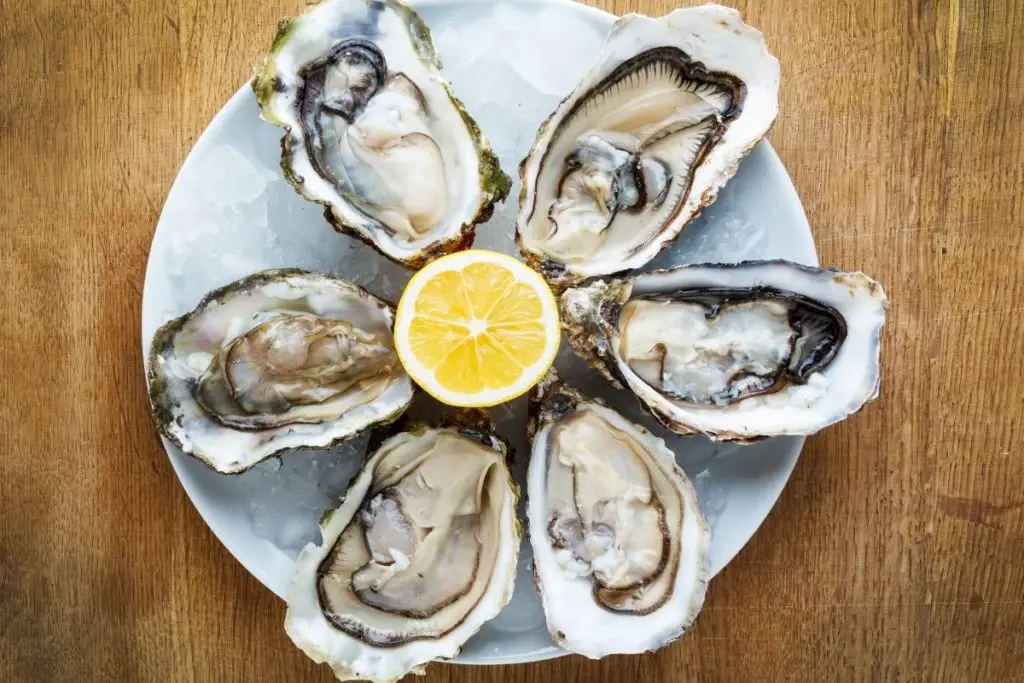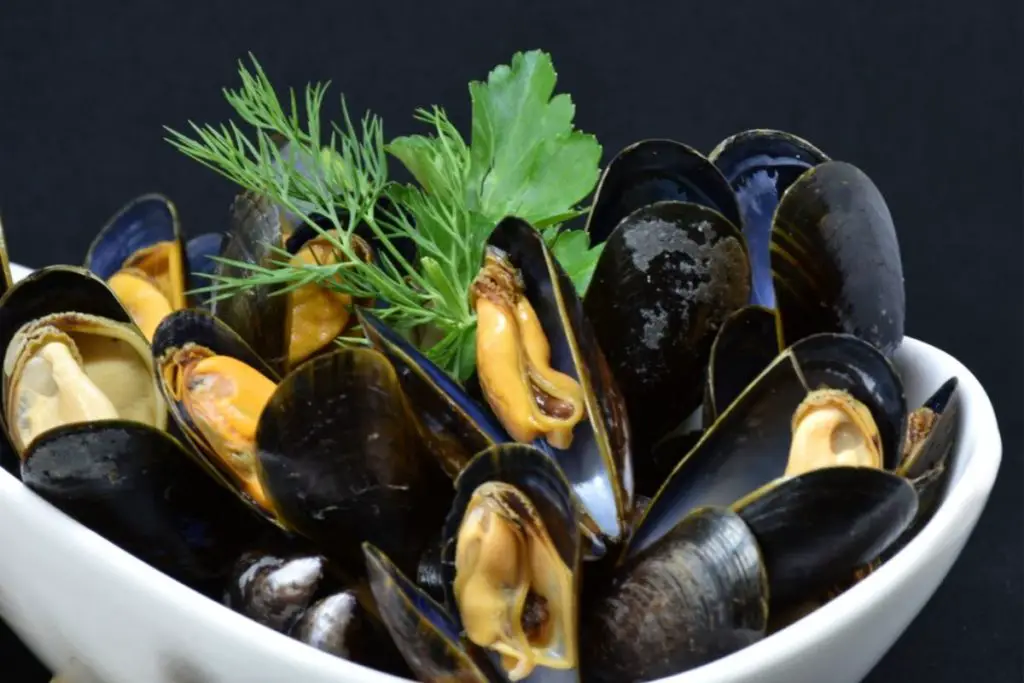Oysters and mussels are both edible types of molluscs. They are both a popular kind of seafood that is used in various different cuisines all over the world.

They are quite versatile and can be used in lots of different types of recipes. People often assume that oysters and mussels are interchangeable. But what is the difference between oysters and mussels? Which one is better?
We have put together this useful guide to help you understand the difference between oysters and mussels and which one you should use in your recipes. Keep reading to find out more.
Appearance
There are some similarities when it comes to the appearance of oysters and mussels, but also some important differences.
Both oysters and mussels have a soft middle encased in a hard shell. Oysters are larger, with rough shells that are usually dull in color and appearance.
Oyster shells will often be encrusted with barnacles. Mussels have much smoother shells that are darker in color – a purple-black color- that are sometimes shiny.
Oysters have a rounder, oval shape whereas mussels have elongated ends, making them more of an oblong shape.
When it comes to the body of the mollusc, oysters are more fleshy than mussels. Mussels have feet whereas oysters don’t, but they still choose to remain stationary.
In The Wild
Both oysters and mussels live under water. Oysters are found in saltwater, though they have been known to travel upstream and can be found in some rivers or brackish waters.
The salty seawater is what calcifies their shells. Mussels can be found in the sea, but often choose to live in brackish or freshwater in a symbiotic community. Fully grown oysters are often eaten by birds, but smaller oysters are eaten by some crabs and large fish.
The oyster larvae are also eaten by anemone and flatworms. Mussels are eaten by birds, but are also eaten by starfish.
They tend to spend more time out of the water than oysters and are found in tidal areas, so will be eaten by any animals that decide to scavenge the area.
Mussels are found in much larger quantities than oysters, which means they are cheaper to purchase.
There is a large demand for oysters as they are considered an aphrodisiac, which also pushes up the price. Oysters are seen as a more luxurious food item than mussels.
Pearl Production
Oysters are known to produce pearls- both in saltwater and freshwater – which means they are farmed for their pearls as well as for a source of food. Pearls are valuable and are used to make jewellery.
Saltwater pearls are more rare than freshwater pearls so they are more expensive to buy. Mussels are capable of producing pearls, though it happens very rarely. This means that they are only farmed for food purposes.
Nutrition
Mussels are generally considered to be more nutritious than oysters. They are a good source of protein and also contain Vitamin B and useful minerals.
Oysters are higher in fat and cholesterol, but also contain more iron, zinc and copper than mussels.
Preparation
Oysters need to be shucked before they are cooked. This is where the shell is opened with a shucking knife to reveal the oyster.
You can either cook the oyster in it’s half shell or remove it entirely and cook it as you would with small pieces of meat (for example if you want to make an oyster stir fry or oyster soup).
If you are cooking the oyster in the half shell, the recipe will often call for a small amount of the water to be left in the shell to add more of a salty, briny flavour to the dish.
Mussels need to be soaked before cooking to clean them and remove any sand, but they are always cooked in their shells and are not removed from the shells beforehand.
The shells open as the mussels are cooked, revealing the meat inside. If a mussel remains closed after cooking then you need to discard it, as this indicates that the mussel is not suitable to be eaten.
You can remove the mussels from their shells after eating to put them into a dish, but it is more common for the mussels to be served in their shells.
Both oysters and mussels can be purchased pre prepared and precooked, often stored in water. You need to be very careful with how long you store mussels and oysters for, and how fresh they are when you purchase them.
Only buy them from a reputable source to ensure that they have been cleaned correctly, stored correctly, and they are fresh.

Flavour
Oysters are generally considered to be tastier and more flavoursome than mussels, though it comes down to personal preference. Oysters are soft and tender, with a consistency that is similar to jelly.
They can range in flavour from fruity to salty, nutty to creamy, depending on whether they are farmed or fresh caught, how they have been stored, and how they have been cooked.
Mussels are less delicate, with tougher and thicker meat. They have a sweeter flavour that is more delicate, and it can vary depending on where the mussels have come from. Mussels lend themselves to lots of different cooking methods and have been compared to chicken.
Both oysters and mussels can be smoked and take well to those kinds of flavours. They can both be boiled, broiled, steamed or baked. They can also both be served both in and out of their shells depending on the recipe.
Oysters are often baked or steamed in their half shells with various toppings and served as a canape or an appetizer. They are popular at high end parties because they can be eaten standing up.
The strong flavour goes well with other luxurious items like champagne and caviar.
Mussels are regularly steamed or boiled in various flavours or poached in a creamy sauce, then served in a large pot. They make a lovely starter, or a main meal served with fries to dip in the sauce.
Mussels are also very popular in dishes like paella or seafood pasta, where they are added in with their shells still on.
As their flavours and textures are different, and they need to be cooked and prepared in different ways, they are not interchangeable in recipes.
Can You Eat Them Raw?
It is not recommended to eat raw mussels. They carry a lot of harmful pathogens and need to be correctly cleaned and cooked to ensure that they are safe to eat. Some people eat raw oysters, but this is also dangerous.
Oysters filter the seawater in order to get their food, and the bacteria in the water can build up inside the oyster. Mussels or oysters that have been poorly prepared or undercooked are a very common cause of food poisoning.
If you order oysters or mussels at a restaurant, make sure that the restaurant has a good hygiene rating and a good reputation when it comes to seafood.
You can get very ill from eating bad oysters or bad mussels. When cooking them at home, you must ensure that they are properly cooked before you eat them.

